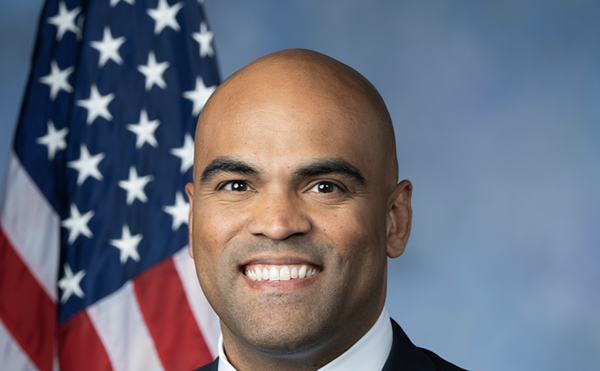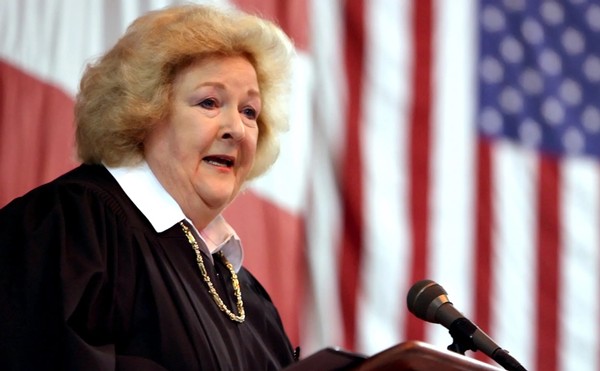In a way, it looks like an illogical bit of strategizing. Why would you want to call attention to the idea that people dislike your candidate? But the theory behind such underhanded campaigning is perfectly sound, if morally bankrupt. If you make your opponents look like rude, belligerent wackos, you marginalize the content of their arguments. Demean the messenger, and maybe you can demean the message.
This tactic comes to mind when considering two alleged incidents of local harassment against uniformed military people, recently reported by Express-News columnist Roddy Stinson and KENS-TV.
The story was that Major General Darrel Porr, the commander at Fort Sam Houston, sent a warning to local military
| Almost no information exists on the reported harassment. |
"There has been a significant increase of demonstrations throughout the United States in opposition the ongoing U.S.-led military operations in Iraq," Porr wrote. "As individuals voice their opinions against military operations, they tend to direct their frustrations toward government and military symbols." Although most anti-war protesters have emphasized that they differ with the U.S. government's policy - not with the troops assigned to carry out that policy - Porr has equated peace activism with intolerance against the military.
The problem is magnified by the fact that almost no information exists on these reported acts of harassment. One incident allegedly happened on the Northeast Side, where two men made threatening gestures and pounded on the window of a drill sergeant's car. The other incident described by Porr involved two uniformed sailors outside a River Walk restaurant "who were accosted by several males who said, 'You'd better not go to war.'"
Unquestionably, Porr's decision to send out this warning makes this story newsworthy. What's troubling is that both Stinson and KENS responded to his notice by assuming that the harassment incidents were established facts. They did so despite the lack of substantiating police reports, names of victims or perpetrators, dates, times, witnesses, or any other solid form of evidence.
Tom Wetzler, a Vietnam vet and anti-war activist, found the harassment stories suspiciously short on details. When he questioned KENS anchorwoman Vicki Buffolino about the haziness of the facts, her e-mail response was that Fort Sam representatives "asked that we not be too specific, because they don't want to give those kind of people undue press."
Stinson learned of Porr's notice from an anonymous e-mail, and while a Fort Sam spokesman was more than willing to confirm the story, he refused to provide any substantiating information. That didn't deter Stinson, who referred to April 11 (the date of Porr's notice) in print as "one of the saddest days in Alamo City history."
Stinson, in an interview with the Current, rejects the notion that any facts are in doubt. "We know what happened," he says. "The general saw information that concerned him and he wrote 24,000 people, 'Don't wear your uniform in town.' It's not rocket science. You have two choices: Believe the general, or don't believe the general."
Actually, the choices are not as simple as Stinson insists. Unless Porr witnessed the incidents, he is relying on information relayed to him by military personnel. And it is important to consider that in recent months similar stories about public harassment of the military have spread in such places as Hilton Head, South Carolina and Duluth, Minnesota, only to crumble upon investigation.
In Duluth, TV station WDIO reported in March that a uniformed marine had been denied service at a local eatery. Jim Heffernan, writer for the Duluth News-Tribune, actively sought details for the story, but none emerged. The restaurant's operator denied the story, and no Marine came forward. Heffernan concluded: "All talk about military service personnel being dishonored by merchants, or even by residents, in Duluth are best considered urban legends."
In San Antonio, it's difficult to make any conclusive determinations, particularly with Fort Sam choosing not to provide any supporting evidence (the base's spokesperson did not respond to phone calls from the Current). Even Stinson's readership seems split, albeit along some disturbing lines.
"I've had readers who think the general overreacted," he says. "Of course, I've also had readers who think the general ought to arm all his guys and send them out in the community." •

















